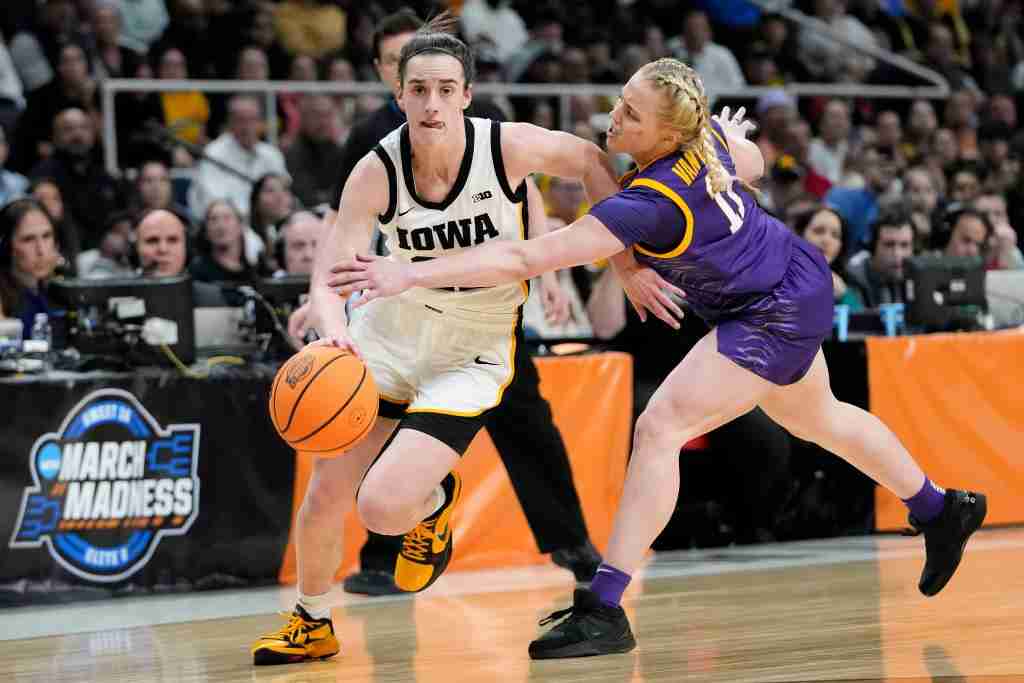On Monday night, 12.3 million people watched Iowa and Caitlin Clark, the No. 1 overall pick in this year’s WNBA draft, defeat Angel Reese, Flau’jae Johnson and LSU in an NCAA Tournament regional final. A rematch of last season’s championship game, it was the most-watched game in women’s basketball history.
Looking back at this story, the popularity of women’s basketball is undeniable. The problem has never been interest, but access.
During the 1981-82 season, attendance at Division I women’s games totaled 1,926,989, according to a report The championship game between Cheyney State, coached by future Hall of Famer C. Vivian Stringer, and a Louisiana Tech team that included current LSU coach Kim Mulkey saw more than 9,500 tickets soldbut only 7,000 fans were present.
On television, 8.79 million viewers watched the Lady Techsters come back in the second half to win 76-62 behind a 20-point performance from MVP Janice Lawrence and 12 of 14 free throws from Wade Trophy winner Pam Kelly. The game remains one of the biggest games of the season. top five most watched shows NCAA women’s tournament games.
The most-watched games featured Hall of Fame players like Cheryl Miller, Sheryl Swoopes and current South Carolina coach Dawn Staley, or future WNBA stars like Clark and Reese. The showdowns also featured some notable coaches like Geno Auriemma, Pat Summitt, Tara VanDerveer and Stringer.
But the most important common denominator was their availability on national television. (ESPN took over as broadcast partner for women’s college basketball in 1995.)
Since the first championship game in 1982, 42 years ago, total viewership for Division I women’s basketball has climbed to more than 11 million per season. But for much of that time, many women’s games weren’t televised, and those that were were available primarily on cable channels that viewers had to seek out.
This, along with the NCAA not allowing the women’s tournament to use the “March Madness” brand until the 2021-22 season, has stunted the sport’s growth. The men’s tournament was available on multiple channels and received significant marketing support, while the women’s tournament was left to flounder.
The lack of resources and investment in women’s sport has always been a major problem. But the fans have been there.
Women’s basketball has always had talent, stories and coaches you either love or hate. Much of the poise and style of today’s game is borrowed from players of the past whose games weren’t as visible.

What we see today: social media rhetoric, women’s basketball at the top of national sports schedules, sold-out arenas and players Declaring for the WNBA Draft in Vogue — it’s the result of increased visibility. We see the star power of these young women.
The growing success of the NCAA women’s tournament creates an opportunity for the WNBA to capture new viewers and continue its visible growth.
In 2023, the league saw its largest audience in two decades. Throughout the season, the WNBA reported year-over-year growth in attendance and television ratings and is reportedly working to expand its media rights deals.
According to Sports managementThe WNBA makes about $60 million a year from its television and streaming deals with ABC/ESPN, Amazon Prime Video, CBS and Ion. The current deal, which is bundled with the NBA, expires in 2025, and a new one could see the value of the WNBA rights increase with the influx of new talent and new fans.
While the WNBA remains slow to developA new Bay Area team announced in October recently made headlines when the team’s season ticket sales were still nonexistent. exceeded 5,000.
The defending WNBA champion Las Vegas Aces, who led the league in attendance last season, have sold 8,600 season tickets for the 2024 season at Michelob Ultra Arena, which seats about 10,000. After Clark declared for the draft, the Indiana Fever, who hold the No. 1 pick in this year’s draft, saw a Increase in ticket salesAll this proves once again that there is a craze for women’s football.
The future of the WNBA looks bright. With so much momentum in its favor, the league and its team owners must turn this moment into movement. They must capitalize on new stars, welcome more expansion teams, invest in existing teams’ playing and practice facilities, and make games more accessible.
The past is just prologue. We are at a generational turning point.
